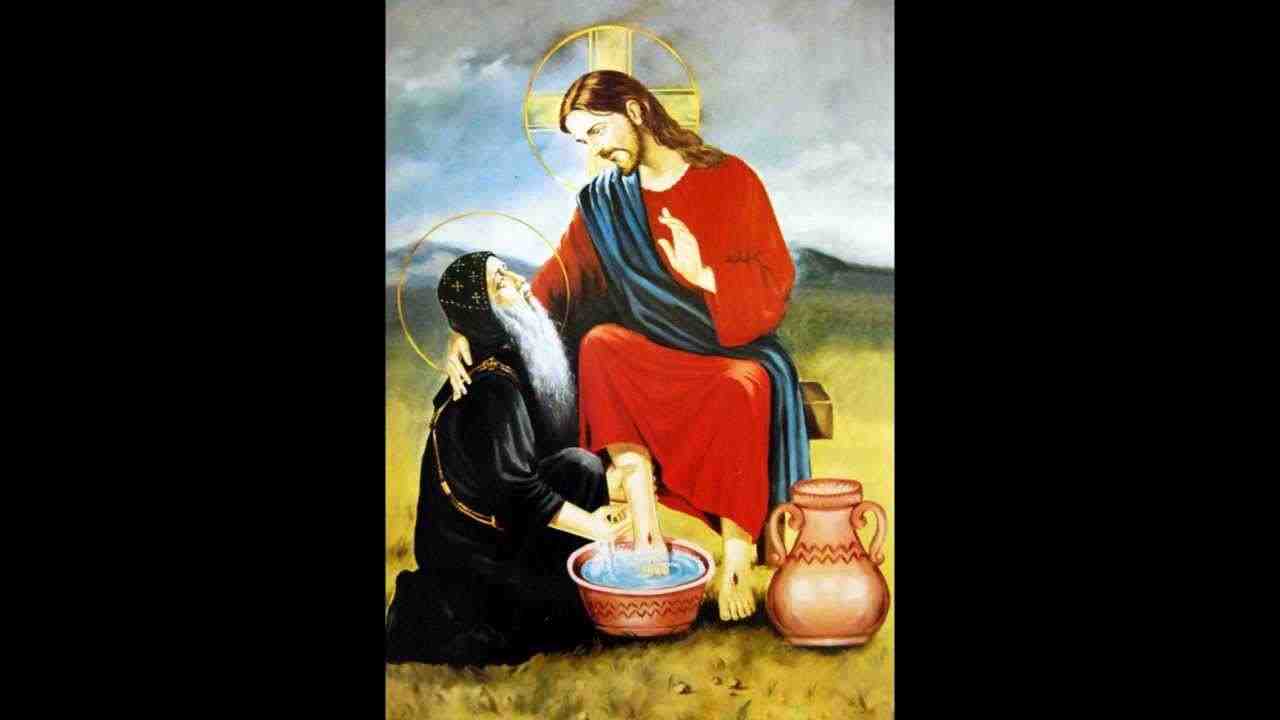The saints and the fellowship of the church

Today, we celebrate the departure of the great saint, Anba Pishoy, and yesterday we celebrated the departure of Anba Shenouda the Archimandrite. Therefore, in this article, I would like to talk about the relationship of the the saints with church.
The Church is a divine laboratory that produces saints. Whoever lives in a fellowship with her, will allow the divine grace, which sanctifies the soul and reflect the image of Christ within it, to flow within him. The church is the body of Christ and it is obvious that there is no holiness without Christ. Therefore, it is impossible for someone isolated from church to enjoy holiness no matter how much he strives, like a tree that cannot grow or be fruitful without being planted next to the streams of the living water. These abundant springs of water that was revealed to us by the Bible as water running out of the altar (Ezekiel 47)
A saint is someone who lives in a fellowship with the church… Fellowship of the upright faith, fellowship of the holy sacraments, fellowship of the ministry and the empathy for each member of the body [of Christ], “Bear one another’s burdens, and so fulfill the law of Christ.” (Galatians 6:2)
Although we may have heard of saints who lived in solitude in the desert for prayer and serenity, they were not isolated from the church but stayed connected as her living members. They pray for everyone, provide teaching, guidance, and spiritual experience for many. They carry the church within their hearts and keep being connected to her needs, and never isolated from her.
For Instance, Saint Paula the first hermit did not see a face of a human for more than 70 years; the earth did not deserve to be tread by his feet (according to a heavenly testimony). It was said about him that through his prayer, God would allow rain fall and overflowing of the river Nile. This reveal to us that Saint Paula cared in his prayers to ask for these basic necessities of people’s lives and the safety of the world. Thus, he was not isolated or self centered, rather he embraced the world with love, feeling pain of those who are in pain and the need of those who are in need, and effectively contributed in ministering to them.
There are many stories that we read about the lives of the hermits, which confirms these facts. For example, I will mention one story from the life Saint Pishoy and another from the life of Saint Shenouda the Archimandrite:
* It happened that Saint Pishoy heard of a person who teaches the congregation of some town with wrong teachings, he taught that God is only two hypostases [Persons], Father and Son. Saint Pishoy was saddened for the perdition of this people of this town if they stay in this corrupt faith. He prayed that God may guide him on what to do. God inspired him, with creative idea, to weave a basket with three handles and to go to that town to sell it. So he made some baskets and went to the town to sell them [making and selling baskets used to be a common monastic vocation]. Some people marveled and asked him: Why did you weave a basket with three handles, although two are enough? He answered that he believes in the Holy Trinity, the Father, the Son, and the Holy Spirit, and that he likes to make everything resembling the Trinity. The audience marveled and said” We know the Father and the Son, but we don’t know the Holy Spirit. Saint Pishoy started to explain to them the Trinity, one essence in three hypostases [Persons] as it was revealed to us in the bible (Mt 28:19, Luke 1:35, 2 Corinthians 13:14, 1 John 5:7, Numbers 6: 22-27 and many other references). They all believed including their teacher and proclaimed the Holy Trinity. Thus, Saint Pishoy won the people to the upright faith and saved them from heresy and deception!
The question is: What drove Saint Pishoy to carry out this ministry except his sense of fellowship of the church and his zeal for the salvation of every soul within her.
* Also, we read about Saint Shenouda the Archimandrite, although he was responsible of shepherding more than four thousand monks, he regularly preached the congregation of the surrounding areas on weekly basis. He explained the faith to them and sowed spiritual values in their hearts, specially that this period was the time of the heresy of Nestor. Thus he played a great role in holding the upright faith steadfast. Additionally, he traveled with Pope Cyril I to the council of Ephesus in 431 AD to support him in confronting Nestor. When a famine occurred because of the weak flooding of the Nile in one of the years, he opened the storerooms of the monasteries to the people of the area to take wheat as they please.
This, and many other accounts reveal to us that Saints were very empathetic towards their brothers and sisters, the believers in the church , and that they had their effective role as members in the body of Christ.
Our steadfastness in the church in an environment of worship, teaching and ministry is the only guarantee that we are walking in the path of the saints towards the glory of the everlasting life.